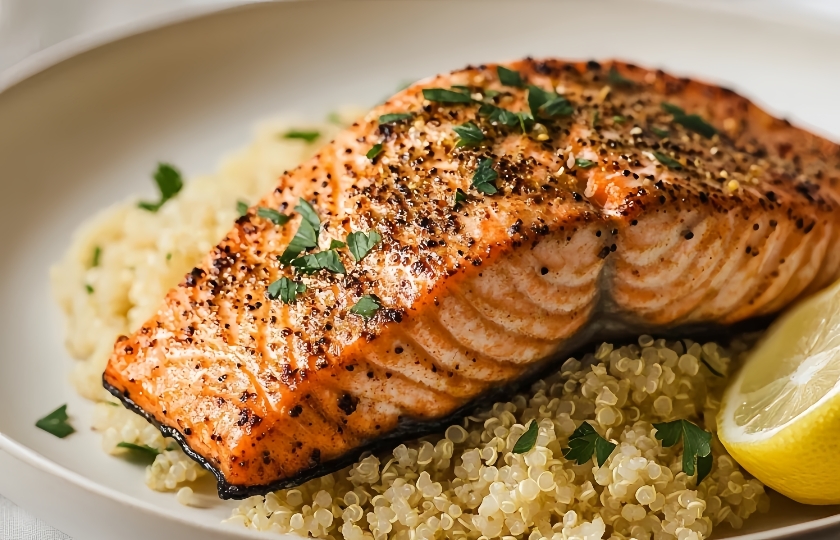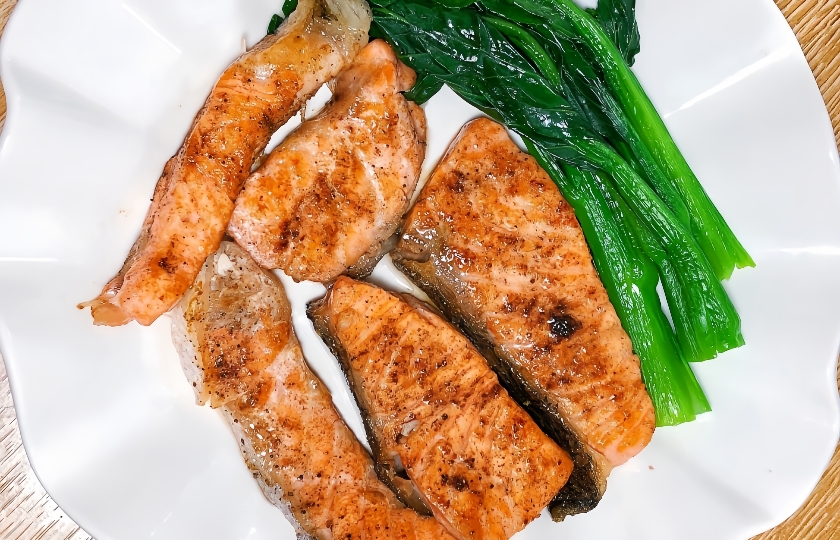Keeping the Taste: How Long Can Cooked Salmon Be Stored in the Fridge?
 Hey food lovers! Have you ever cooked some delicious salmon, stored it in the fridge, and then wondered how long it can actually stay there? You don't want to risk getting sick from eating it, right? Don’t worry, let’s dive into this topic.
Hey food lovers! Have you ever cooked some delicious salmon, stored it in the fridge, and then wondered how long it can actually stay there? You don't want to risk getting sick from eating it, right? Don’t worry, let’s dive into this topic.
How long does cooked salmon last in the refrigerator?
The storage time for cooked salmon in the fridge depends on several factors. Generally, when stored in the refrigerator, cooked salmon can be safely kept for 1 to 2 days. While the fridge temperature slows down microbial growth, it doesn’t completely stop it. Over time, the quality of the salmon will degrade, becoming less tender and potentially developing an off smell.
If you store cooked salmon in the freezer, its shelf life extends to about 3-6 months. However, keep in mind that after thawing, the texture and freshness may decline, making it slightly dry and less flavorful compared to when it was freshly cooked.
Additionally, the storage duration also depends on the packaging method. Using airtight bags or containers and removing as much air as possible will help the salmon last closer to the recommended timeframes. Poor packaging can lead to quicker spoilage.
I hope this helps you store your food better!
When storing cooked salmon, make sure to avoid these common mistakes?
Temperature Control
Don’t Leave It Out Too Long: After cooking salmon, don’t leave it at room temperature for too long before refrigerating. Room temperature is ideal for bacteria to grow rapidly. Cooked salmon should not sit out for more than 2 hours.
Set the Fridge to the Right Temperature: If your fridge isn’t cool enough, it can’t effectively slow bacterial growth. Keep the fridge temperature between 32-40°F (0-4°C) to ensure the salmon stays safe.
Avoid Freezer Temperature Fluctuations: Frequent temperature changes in the freezer, from opening the door often or malfunctions, can cause the salmon to thaw and refreeze, damaging its quality.
Packaging
Use Airtight Packaging: It’s common to store salmon without proper sealing, but that’s not ideal. Use airtight bags or containers to prevent exposure to air, odors, and bacteria.
Remove Air from Packaging: Even with airtight packaging, make sure to remove as much air as possible to prevent oxidation, which can cause the salmon to spoil faster and develop off flavors.
These tips will help you keep your salmon fresh and delicious!
How to Tell if Cooked Salmon Has Gone Bad?
You can determine if cooked salmon has gone bad by checking the following:
Appearance: Freshly cooked salmon should have a bright pink or orange color and look vibrant. If it has turned dull, has black or white spots, or feels slimy, these are signs of bacterial growth and spoilage.
Smell: Fresh salmon has a mild, fresh fish smell. If it has a strong, pungent, or sour odor, similar to garbage, it has likely gone bad and should not be eaten.
Texture: Fresh salmon should be firm and slightly springy when pressed with chopsticks or a fork. If the texture is mushy or crumbly like tofu, this indicates that the protein structure has broken down due to bacterial activity.
Broth: If the salmon is stored in broth, check the broth’s clarity. Fresh broth is clear, while spoiled broth will be cloudy and may have foam on the surface. These are signs that the salmon has gone bad.
By checking these aspects, you can determine if your cooked salmon is still safe to eat.
Why Is My Salmon Slimy but Not Smelly?
If your salmon feels slimy but doesn’t smell bad, there could be a few reasons:
Natural Mucus: Salmon naturally contains some mucus proteins. When you take it out of the fridge, temperature changes can make these proteins more noticeable, giving the fish a slimy feel.
Early Stages of Microbial Growth: It’s possible that microorganisms have started to grow, but are still in the early stages. While they haven’t yet produced a noticeable odor, their presence can make the fish feel slimy. If not addressed, these microorganisms will eventually cause the fish to spoil and smell bad.
To be safe, examine the salmon further. Check the color—freshly cooked salmon should be pink or orange. Also, check the texture—fresh salmon should be firm. If both the color and texture seem fine, you can reheat the salmon thoroughly to kill any potential microorganisms before eating.

Can You Refreeze Previously Frozen Salmon?
Generally, you can refreeze salmon if it's handled properly. If the salmon was initially frozen under good conditions and thawed slowly in the refrigerator, not left out at room temperature where bacteria can thrive, then refreezing is relatively safe. However, each freeze-thaw cycle affects the salmon’s quality. Ice crystals form and melt, damaging the cells, which can make the salmon's texture more mushy and dry.
If the salmon was thawed improperly, such as being left out at room temperature for too long, bacteria may have grown. Refreezing in this case can halt further bacterial growth but won't eliminate existing bacteria, posing a potential food safety risk when thawed again.
In summary, whether to refreeze previously frozen salmon depends on how it was thawed and stored, ensuring both quality and safety.
Does Refreezing Affect Nutritional Value?
Yes, the nutritional value of salmon can be affected by repeated freezing and thawing.
Salmon is rich in protein, and during freezing, ice crystals form inside the cells, potentially damaging them. With repeated cycles, more protein can be lost along with water, affecting its integrity—like jewels (protein) in a box (cells) being jostled and lost.
Omega-3 fatty acids in salmon, beneficial for health, can oxidize each time the fish is thawed and exposed to air. With repeated cycles, their levels decrease, similar to metal rusting.
Vitamins like B12 and D can also partially degrade during this process. Vitamin B12, in particular, is sensitive to unstable conditions, and repeated temperature changes and cell damage promote its breakdown.
While refrozen salmon can still provide some nutrition, its value is lower compared to fresh or properly frozen and thawed salmon.























